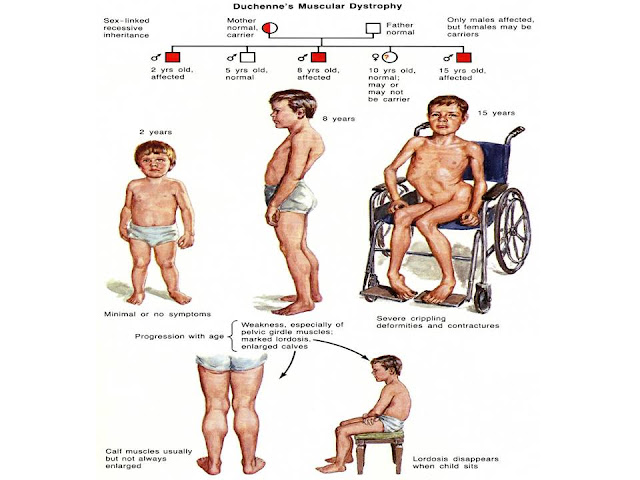Is Cerebral Palsy and Muscular Dystrophy Treatable?
Is Cerebral
Palsy and Muscular Dystrophy Treatable?
A group of muscle abnormalities
that impair a child's capacity to control movement are collectively referred to
as cerebral palsy. It results from aberrant brain growth or damage before,
during, or soon after birth. Depending on the extent and location of the brain
damage, cerebral palsy has varying effects on various kids.
As the areas of the brain that
control muscle function are damaged, the messages or signals from the brain to
the related muscles are disrupted, which has some effect on a child's movement.
Children with Cerebral Palsy may
struggle with their balance, reflexes, muscle tone, and motor skills.
Nevertheless, other characteristics like learning and language abilities could
be comparable to those of a typical youngster, again depending on the extent of
brain injury.
Symptoms
Of Cerebral Palsy and Muscular Dystrophy
Abnormal muscle tone, which
affects balance, posture, and motor function, can be a defining feature of both
cerebral palsy and muscular dystrophy. Infants with the disorders sometimes go
undiagnosed until they begin to exhibit developmental difficulties. The
majority of kids are diagnosed between 18 and 24 months.
|
Cerebral palsy symptoms |
Muscular
dystrophy symptoms |
|
●
Difficulty walking ●
Difficulty eating ●
Fine motor skill problems ●
Learning problems ●
Stiff muscles ●
Tremors |
●
Difficulties getting up, running, or moving feet ●
Growth delays ●
Learning problems ●
Muscle pain and weakness |
There is a subtype of cerebral
palsy that is distinguished by hypotonia (low muscle tone), even though
cerebral palsy is typically characterised by high muscle tone. A characteristic
of muscular dystrophy is the weakening of the muscles with time. The muscle
tone of those with muscular dystrophy declines as the disease worsens.
Children with muscular dystrophy
are likely to develop respiratory and cardiac issues by the time they are
teenagers. This is due to the fact that the heart and diaphragm are muscles,
and their dysfunction may be brought on by a shortage of dystrophin.
Cerebral Palsy and Muscular Dystrophy:
similar or different?
Although the two illnesses may
present similarly, they are fundamentally very distinct from one another. A
section of the brain has been damaged, which is the underlying cause of the
neurological disorder cerebral palsy. A hereditary disorder called musculardystrophy, in contrast, has as its primary cause damage to the gene that
produces the protein dystrophin, which is crucial for the preservation of
normal muscle cell proliferation.
However, these diseases would
impact a child's ability to move, whether through delays in the development of
motor milestones like crawling, sitting, standing, and walking. A child with
cerebral palsy and dystonia both impact the capacity to control muscles,
therefore the following secondary consequences of muscular dystrophy may also
occur:
●
Insufficient
muscular growth as a result of inactivity.
●
Deformities of the
feet, arms, and hands, as well as malformed bones and joints and muscle
imbalances that may cause complications including scoliosis and hip
dislocations.
●
Compensatory
movement techniques to facilitate movement, such as excessive hip rotations
when walking rather than a straight line.
●
Easily exhausted
because they tend to use more energy on simple movements than other youngsters
do.
Can
Cerebral Palsy or Muscular Dystrophy be treated?
Children who have Cerebral Palsy
have permanent, non-progressive brain damage, which indicates that while the
disorder cannot be treated, the damage won't become worse. If necessary
precautions are not taken, the damage's side effects could worsen. The muscles
will get weaker with age for kids with muscular dystrophy. Medication can,
however, lessen the impact of the decline.
Physiotherapists work to help
children with movement impairments and challenges learn the most effective ways
to maximise their bodies' functional mobility. Depending on their capabilities
and needs, interventions would be concentrated on promoting mobility and
achieving age-appropriate gross motor skills (e.g., sitting, crawling,
standing, walking, running, and jumping). This would be done through enjoyable
games and activities that incorporate training for strength, balance,
coordination, flexibility, and endurance.
Intervention would include
dealing with any secondary problems that these kids could have, like coping
mechanisms for scoliosis and hip dislocations. The kid's quality of life can be
maximised by a physiotherapist working with the child's carers to empower the
youngster and maximise their independent movement, even though they may not be
able to undo the underlying harm. Thus, to optimise a child's potential and to
lessen or better control the illnesses' secondary effects, early detection,
diagnosis, and intervention are essential.
If the field of Cerebral Palsy
and Muscular Dystrophy motor mobility and how it is treated interests your
medical mind visit us at RRMCH and fulfil the dream set by the medical aspirant
in you. For more information contact us and scroll through our website.


%20(1).jpg)


Comments
Post a Comment